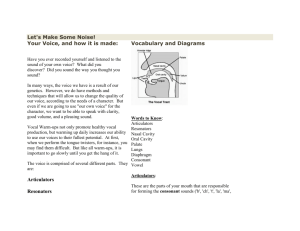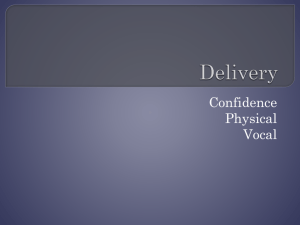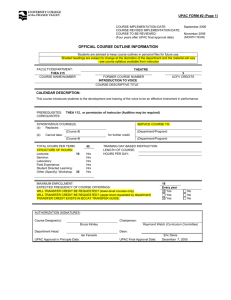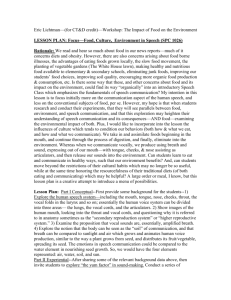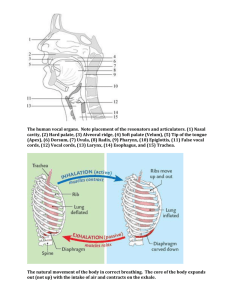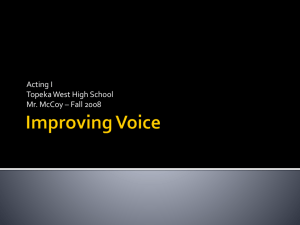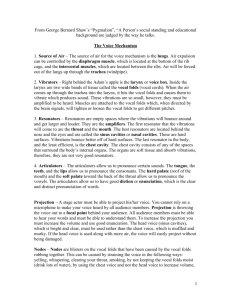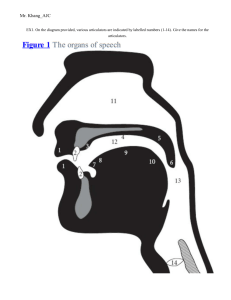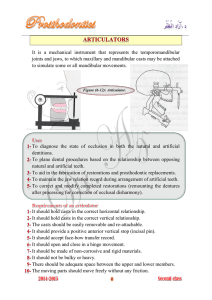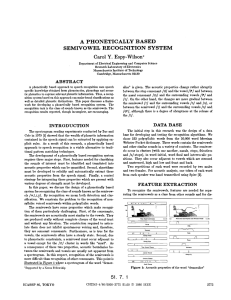THE VOICE!
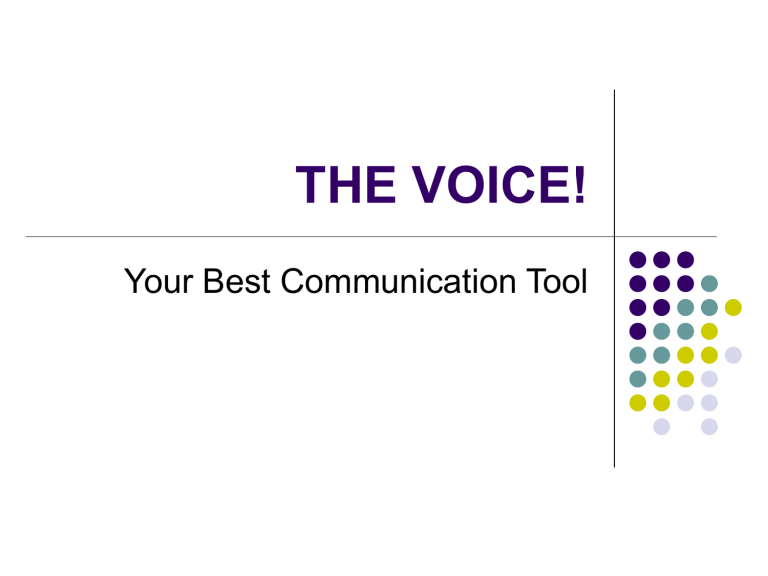
THE VOICE!
Your Best Communication Tool
How the Voice works
All professional speakers must “reawaken” their voice and exercise it as a muscle.
There are four basic parts to the voice:
The Motor
The Vibrators
The Resonators
The Articulators
The Motor
THE LUNGS provided force and energy for your voice.
Breath-support is poor for most people; we run out of breath easily.
Strengthening breath-support help give us a more flexible and usable voice!
The Vibrators
Energy from the lungs transfers to the
VOCAL CHORDS.
Air vibrates the vocal chords as air passes through them and this creates sound.
Muscle tension in the neck makes it harder to produce sound.
Getting rid of this tension will improve your sound.
The Resonators
Sound from the vocal chords resonates in your vocal “cavities”: your mouth, nose, chest, and your ear cavity.
These cavities amplify sound.
Open these cavities for a rich and powerful voice.
You can change the quality of your sound by controlling where it resonates.
The Articulators
The voice separates and “shapes” into sounds with meaning by the articulators: the lips, tongue, and teeth.
Most do not fully exercises the articulators.
We suffer from “lazy lips.”
Tongue twisters are the best workout for your articulators.
The Guitar Analogy
Motor = The Fingers
Vibrators = The Strings
Resonators = The Body
Articulators = The Frets
Articulation
Articulation: lack of this usually occurs because your mouth is not open far enough.
Say: Peter Piper picked a peck of Pickled
Peppers…
If your jaw was wired shut
With normal lip/jaw movement
With exaggerated lip/jaw activity
Speaking should occur in between 2 and 3.
Articulator Problems
Fricatives: Sounds caused by gradual escape of air through constriction in the mouth or vocal tract.
f, v, th, s, z, sh, zh, h
Plostives and Stops: Sounds caused by an explosion of air or sudden stop of air flow.
p, b, t, d, k, g
Frictionless Consonants: semivowels, nasals, and laterals.
Frictionless Consonants
Semivowels: Continuous, vowel-like quality.
w, r, y
Laterals: Similar, but the breath exits from the side of the mouth rather than the front.
l
Nasals: Similar to laterals but with a nasal
Resonator.
n, m, ng
Let’s Practice…..
A simple vocal warm up…
Find a partner and try the rest!
When you are done, wait for the rest to finish.
Try some for the class and reflect.
Turn in the sheet!
How to Improve!
Phrasing: Also known as breath groups.
Dictated by announcer’s desire to be understood
Has little to do with pronunciation
Allows for logical pausing
There are two types of phrases:
Main Ideas: Uses key words that are more important to stress.
Secondary Ideas: Additional information that qualifies the main idea.
Key words get greater Stress or EMPHASIS!
Emphasis
There are four different forms of emphasis:
PITCH RATE
VOLUME QUALITY
Pitch
The “musical” tone of a voice.
Key Shifts: differs between main and subordinate phrases, denotes new ideas, begins new ideas at a new pitch.
Upward v. Downward Phrasing
Upward Inflection: Incomplete thought, unsure.
Downward Inflection: Completion, authority.
Downward pitch is important to give complete emphasis to an idea.
Volume
Emphasis can be achieved by variations in loudness.
This can be sudden or gradual.
Volume use depends on three things:
What you’re saying (emotions)
Where you’re saying it (auditorium v. classroom)
The size of your audience (large, small, spread out, close together, etc.)
Rate
The speed, pace, or tempo of a voice.
PAUSE before a key phrase to indicate its importance.
This is the most effective tool an announcer can use!
Speed up or slow down for a similar effect.
When reading your script, mark these element of emphasis. (We will read this in
Chap. 3).
Quality
The timbre of your voice; how it sounds:
Whisper
Breathiness
Huskiness/Harshness
Nasally
You can change the shape of your voice depending on the purpose of your presentation:
Commercials
Acting
News reporting
